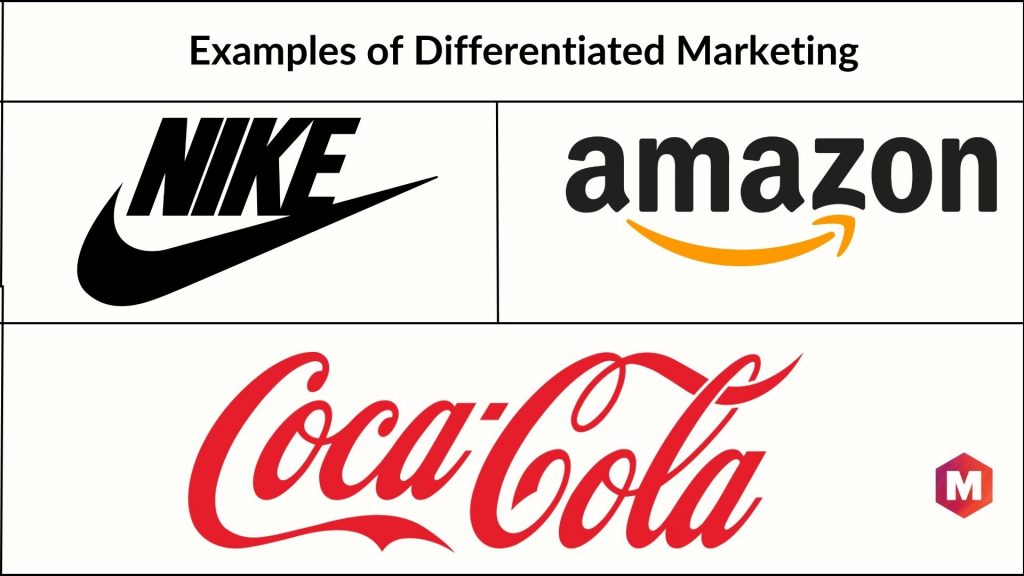Differentiated marketing, also known as multisegment marketing, is a strategy where a company targets multiple market segments with distinct products or services tailored to match each segment’s needs. It’s like having a personal conversation with your audience segments, understanding their unique demands, and providing solutions that resonate.
This approach is truly a game-changer in the realm of customer satisfaction and business growth. This approach allows businesses to cater to each segment’s specific demands, thereby broadening their market reach and increasing customer satisfaction. It helps them better understand customer needs and preferences, which ultimately leads to an improved marketing strategy.
Table of Contents
What is Differentiated Marketing?
Differentiated Marketing, often referred to as segmented marketing, is a strategy where a company targets two or multiple market segments with separate and distinct marketing mixes. It’s like creating specific, tailored messages for different groups of customers within the market, each with their unique needs, preferences, or demographic profiles.
An example of differentiated marketing is a company that creates two different campaigns for a new product launch – one campaign is targeted at college students and the other towards working professionals. Both campaigns have the same overall objective (promoting the new product) but may feature different messages, offers, and marketing tactics to reach each audience effectively.
Different marketing strategies that are differentiated go beyond mass marketing, where companies use the same message and same marketing mix to target the entire market. Instead, it focuses on creating multiple messages or offers that meet the specific needs of different groups of customers.
Key Takeaways!
- Differentiated Marketing targets multiple market segments with separate marketing strategies, aligned with the specific needs and preferences of each group.
- This approach permits businesses to create personalized and engaging customer experiences, enhancing the effectiveness of their marketing efforts.
- Differentiated Marketing helps firms to set themselves apart from competitors by offering tailored solutions to diverse customer segments.
- By understanding and addressing the unique requirements of each segment, businesses can improve their customer retention rates and foster loyalty.
- The implementation of Differentiated Marketing requires comprehensive market research to identify and understand the distinct characteristics of each target segment.
How to Create a Differentiated Marketing Strategy?
Some of the steps of creating a differentiated marketing strategy are –
1) Identify Your Market Segments
The first step in creating a differentiated marketing strategy is to identify the different market segments within your target audience. These could be based on demographics, psychographic to their specific needs, preferences, and buying behaviors., geographical regions, or behaviors. You need a detailed understanding of each market segment to cater
2) Understand the Needs of Each Segment
Once you’ve identified your market segments, it’s vital to understand the specific needs, wants, and preferences of each segment. This can be done through market research, surveys, and customer feedback. The more you know about your customers, the better positioned you are to create marketing campaigns that resonate with them.
3) Develop Tailored Marketing Mixes
For each identified market segment, develop a distinct marketing mix that caters to its unique characteristics. This includes the product, price, place, and promotional strategies. Tailoring your marketing mix ensures that your offerings are appealing and relevant to each segment.
4) Implement Your Marketing Campaigns
After designing tailored marketing mixes, it’s time to implement your marketing campaigns. This involves choosing the right marketing channels, creating compelling content, and timing your campaigns to maximize engagement and conversions. Remember, the objective is to reach out to each segment effectively.
5) Measure and Adjust Your Strategy
Finally, it’s crucial to measure the effectiveness of your marketing efforts across each segment. This helps you understand what’s working and what’s not, allowing you to make necessary adjustments. Use analytics tools to track campaign performance, customer engagement, and sales conversions. This way, you can continuously improve your differentiated marketing strategy to achieve better results.
Benefits of a Differentiated Marketing Strategy
1. Boosts Competitive Advantage: A differentiated marketing strategy allows businesses to craft unique marketing messages that resonate with specific customer segments. By captivating the unique needs and preferences of each segment, companies can gain a competitive edge over businesses employing undifferentiated marketing strategies.
2. Enhances Customer Satisfaction: By delivering tailored offerings and marketing messages, you meet the specific needs of different customer segments. This targeted approach often results in higher customer satisfaction levels, fostering customer loyalty and promoting repeat business.
3. Increases Market Share: When you cater to the distinct needs of different market segments, you can potentially attract a broader audience base. This diversified approach can help your business increase its market share and establish a stronger presence in the industry.
4. Optimizes Marketing Budget: Differentiated marketing allows for a more efficient use of your marketing budget. By targeting your efforts towards specific segments, you can ensure that your resources are used in the most fruitful manner, thereby maximizing return on marketing investment.
5. Facilitates Brand Growth: Over time, targeting specific customer segments can result in increased brand recognition and loyalty. As each segment becomes familiar with the personalized attention they receive, your brand’s reputation for understanding and meeting customer needs can grow. This can lead to long-term profitability and brand growth.
Disadvantages of Differentiated Marketing Strategies
1. Increased Costs: Differentiated marketing often requires a higher investment in terms of time, effort, and financial resources. Customizing products, services, or marketing messages for different target markets can significantly increase the cost of operations.
2. Complexity in Management: Managing multiple marketing strategies for different segments can be complex and challenging. This strategy requires careful planning, coordination, and execution, which might lead to increased stress and workload for the marketing team.
3. Risk of Neglecting Core Segments: In the pursuit of capturing niche markets, there is a risk of neglecting the core customer segments. Overemphasis on differentiation could potentially alienate mainstay customers who have been pivotal to your business’s success.
4. Market Fragmentation: Over-segmentation could lead to market fragmentation, where a market is divided into such small segments that it becomes difficult to maintain a significant presence and achieve economies of scale in any of them.
5. Dilution of Brand Image: Excessive differentiation might lead to a dilution of the brand image. If a brand is perceived to be doing too many things for too many markets, it might lose its unique identity, leading to a weakened brand perception among customers.
Differentiated vs Concentrated vs Undifferentiated Marketing
Differentiated marketing, also known as segmented marketing, is a strategy where a company targets several market segments and designs separate offers for each. This approach allows businesses to cater to the specific needs of diverse customer groups, thereby increasing customer satisfaction and loyalty. However, differentiated marketing typically involves greater resource allocation as it necessitates customized marketing plans and products for different segments.
Concentrated marketing, on the other hand, focuses on a narrow market segment. Businesses employing this strategy specialize in serving the nuanced needs of this specific group of customers. Concentrated marketing allows companies to gain a strong presence in their chosen market segment, and establish themselves as experts or leaders in their respective fields. This strategy can be particularly beneficial for small businesses with limited resources.
In undifferentiated marketing, also known as mass marketing, a company treats the entire market as a whole, delivering the same marketing plan to every potential customer. This strategy can be cost-effective and beneficial for products with universal demand as it allows companies to reach the broadest audience possible. However, undifferentiated marketing may not address the specific needs of different customer groups, potentially leading to lower customer satisfaction.
Let’s have a look at the tabular comparison among differentiated and undifferentiated marketing and a concentrated marketing strategy –
| Marketing Strategy | Description | Pros | Cons |
|---|---|---|---|
| Differentiated Marketing Strategy | Targets multiple market segments with separate offers for each. | Caters to specific customer needs, potentially increasing satisfaction and loyalty. | Requires more resources for customization and can lead to brand dilution. |
| Concentrated Marketing Strategy | Focuses on a narrow market segment with specialized services. | Allows strong presence and expertise in a chosen market segment. | Risks are high as success relies on a single segment. |
| Undifferentiated Marketing Strategy | Treats the entire market as a whole with the same marketing plan. | Broad reach and more cost-effective. | May not address specific customer needs, potentially leading to lower satisfaction. |
Examples of Differentiated Marketing
Some of the differentiated marketing examples are –
1) Coca-Cola
Coca-Cola is a prime example of differentiated marketing. The beverage giant offers an array of products to cater to different market segments. For example, Diet Coke targets health-conscious consumers, while Cherry Coke appeals to those seeking a unique flavor profile.
2) Amazon
Amazon uses differentiated marketing to meet the needs of various customer segments. They offer Amazon Prime for customers who prioritize fast shipping, Amazon Music for those who enjoy streaming music, and Amazon Fresh for customers who prefer online grocery shopping.
3) Nike
Nike demonstrates differentiated marketing by tailoring their products to different sports markets. They produce specialized footwear and attire for various sports sectors like basketball, running, soccer, etc. Each product line is designed to meet the unique requirements and preferences of its target market.
When to Use Differentiated Marketing?
Differentiated marketing is an effective strategy for both wholesale and retail businesses aiming to reach diverse target groups. It involves tailoring marketing strategies to cater to the specific needs, wants, and preferences of different market segments or niche markets. This approach allows businesses to connect more personally with their target audiences, boosting brand recognition and loyalty.
By implementing differentiated marketing, businesses can effectively stand out in a competitive market. They can position their products or services as unique to a specific audience, thereby appealing to their particular interests. It also allows companies to diversify their risk and not rely solely on a single market segment for their success.
- Differentiated marketing can help businesses effectively target niche markets, tailoring their offerings to fit the unique needs of these specific groups. This increases the likelihood of market penetration.
- It provides businesses with the opportunity to tailor their messages and offerings to the specific preferences of different target groups. This can lead to increased customer satisfaction and loyalty.
- Differentiated marketing allows companies to diversify their offerings and reach out to a broader audience, enhancing their potential for growth.
- It also enables businesses to distinguish themselves from their competitors, creating a unique identity within the market.
- Finally, through differentiated marketing, businesses can adapt their strategies to changing market trends and customer preferences, ensuring their continued relevance and success.
Conclusion!
Differentiated marketing is an effective way for businesses to stand out in a competitive market and connect more personally with their target audience. By tailoring messages and offerings to the unique needs of different segments, companies can diversify their risk, reach broader audiences, and enhance customer loyalty. Ultimately, this approach can help businesses achieve long-term success in today’s ever-evolving market.
To ensure the success of differentiated marketing strategies, businesses should focus on gathering insights from customer surveys and other research to better understand their target audiences. Additionally, companies should strive to create multiple campaigns tailored to each niche market, in order to maximize brand loyalty and engagement. With the thoughtful implementation of these tactics, organizations can build a strong foundation for long-term success.
Liked this post? Check out the complete series on Strategy


Superb blog you have here but I was curious about if you
knew of any user discussion forums that cover the same topics discussed here?
I’d really love to be a part of community where I can get responses from other experienced individuals that share the same interest. If you have any suggestions, please let me know. Kudos!